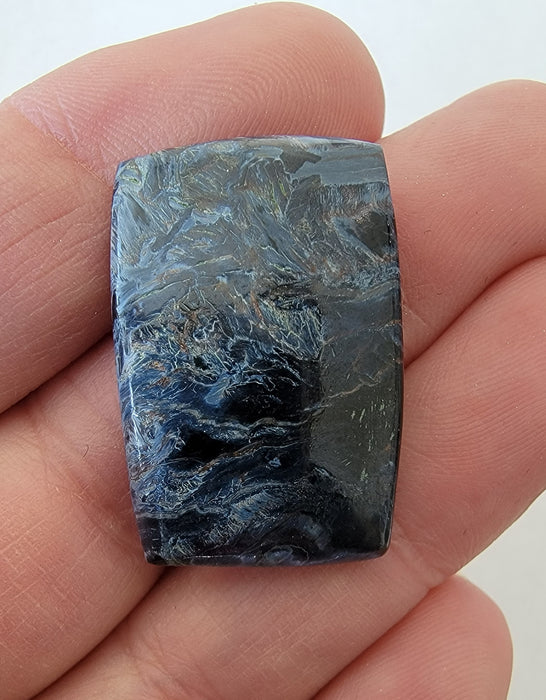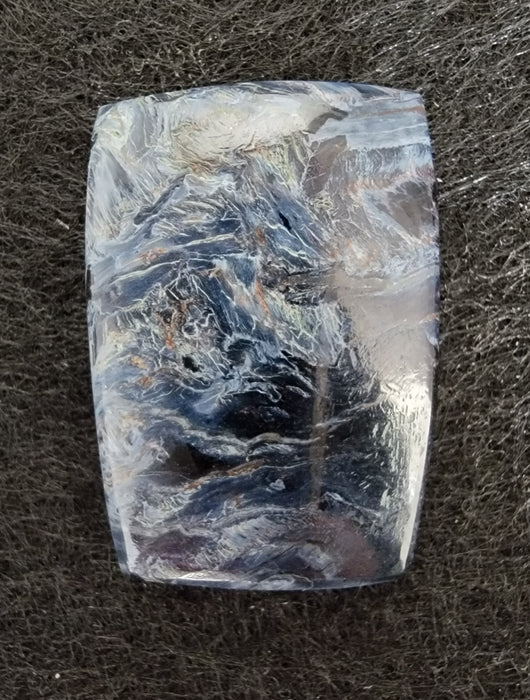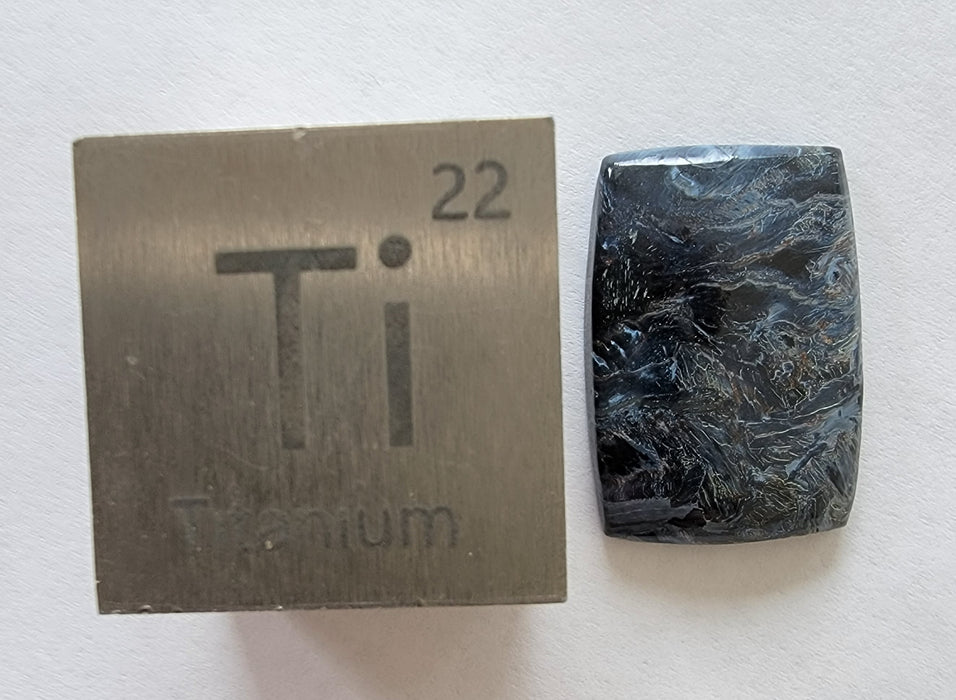29.5ct
Approximate measurement: 3cm × 1.75cm
Pietersite, also called "eagle's eye," was named in honor of Sid Pieters who discovered it in 1962 in Namibia, Africa. Pietersite is a trade name for a dark blue-grey breccia aggregate made up mainly of hawk's eye and tigereye. It is a variety of chalcedony (itself a variety of quartz) with embedded fibers of amphibole minerals in varying degrees of alteration. The fibers cause a blue chatoyancy like that seen in tigereye
Pietersite is almost always cut into cabochons. This is because, to maximize pietersite's chatoyancy, a tall, round cut is required. It is crucial that the cut must be precisely parallel to the length of the pietersite's fibers.
Because its swirling colors resemble a storm, pietersite is known as tempest stone. Pietersite is said to center on the spiritual being with the ability to ground an individual to the etheric body--the first or lowest layer in the "human energy field" or aura. Pietersite discharges negative energies and emotional turmoil while cleansing the aura, restoring it to calm. Pietersite is thought to work with the body during meditation, rapidly moving into a higher state of awareness. Pietersite is believed to be a stone of vision and can be used for a vision quest or shaman journey. According to metaphysical beliefs, pietersite promotes a concerted activation of the sacral and solar plexus chakras, as well as the third eye, creating a powerful increase in the energy of will and in one's intuitive capabilities. Pietersite is an extremely supportive and strengthening stone that increases self-esteem.
A member of the quartz family of gemstones, pietersite is a pseudomorph of quartz. A pseudomorph is one mineral that changes into aer. Pietersite started as the mineral crocidolite--one of several minerals such as tigereye--which belong to the riebeckite family of amphibole silicates. Over time, quartz gradually replaced the crocidolite fibers. As quartz replaced the crocidolite, it took on the shape of the fibrous mineral, which is what causes the chatoyancy in gemstones of this family. Unlike tigereye, the surface of a pietersite looks rather chaotic, with streaks and colors in every direction. Stones and crystals that go through having their materials swirled and reformed are referred to as brecciated.
Namibia is the only place where pietersite can currently be found. In the 1990s, material similar to pietersite was discovered in Hunan Province of China, but the mine was closed a few years after its pietersite had become unavailable. Limited production from Namibia has made pietersite quite difficult to find.
| Mineral Information |
Silicon dioxide, macrocrystalline quartz |
| Chemical Composition |
Quartz: SiO2; Crocidolite: Na2Fe4 (OH/Si4O11) (Variable)2
|
.




